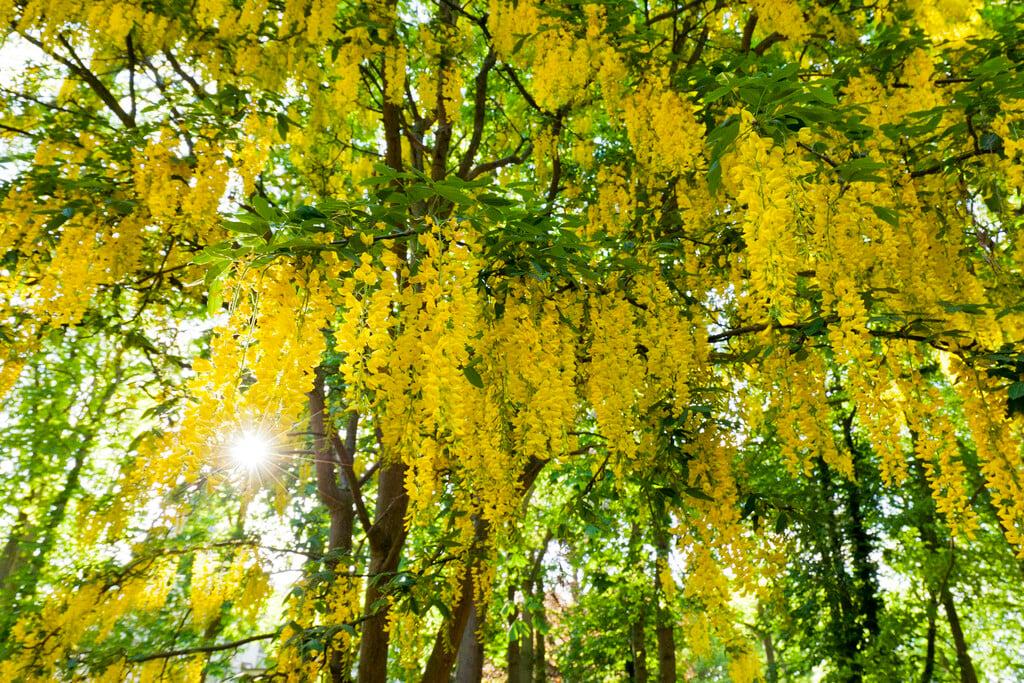Laburnum anagyroides
common laburnum
A deciduous, spreading tree to 8m in height, with grey-green new shoots and three dark green oval-shaped leaflets making up a leaf. The dense, hanging bunches of golden yellow flowers bloom from late spring to early summer
Synonyms
Cytisus laburnumLaburnum vulgare
Size
Ultimate height
4–8 metresTime to ultimate height
10–20 yearsUltimate spread
4–8 metresGrowing conditions
Moisture
Well–drainedpH
Acid, Alkaline, NeutralColour & scent
| Stem | Flower | Foliage | Fruit | |
| Spring | Grey Green | Yellow | Green | |
|---|---|---|---|---|
| Summer | Yellow | Green | ||
| Autumn | Green | |||
| Winter |
Position
- Full sun
Aspect
North–facing or West–facing or South–facing or East–facing
Exposure
Exposed or Sheltered Hardiness
H6Botanical details
- Family
- Fabaceae
- Native to GB / Ireland
- No
- Foliage
- Deciduous
- Habit
- Spreading branched, Bushy
- Potentially harmful
- Harmful if eaten. Wear gloves and other protective equipment when handling Pest: Harmful if eaten (dogs, rabbits, rodents). For further information and contact numbers regarding pets, see the HTA guide to potentially harmful plants
- Genus
Laburnum are small deciduous trees with leaves composed of three leaflets, and bright yellow pea-shaped flowers in pendent racemes
- Name status
Correct
- Plant range
- C & S Europe
How to grow
Cultivation
Good as specimen tree for a sunny position with a well-drained soil
Propagation
Propagate by grafting
Suggested planting locations and garden types
- Cottage and informal garden
- Low Maintenance
Pruning
Pests
May be susceptible to aphids, leaf-mining moths, leaf-mining flies and snails
Diseases
May be susceptible to powdery mildews, silver leaf and honey fungus
Get involved
The Royal Horticultural Society is the UK’s leading gardening charity. We aim to enrich everyone’s life through plants, and make the UK a greener and more beautiful place.
